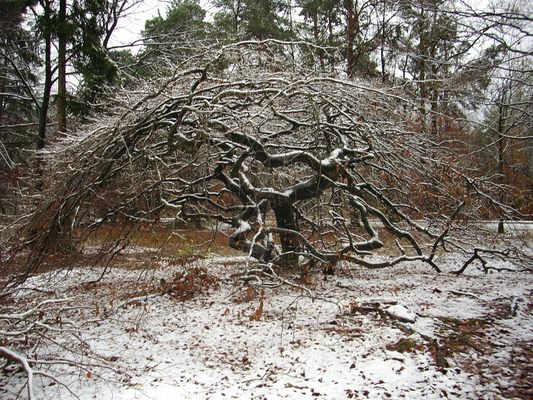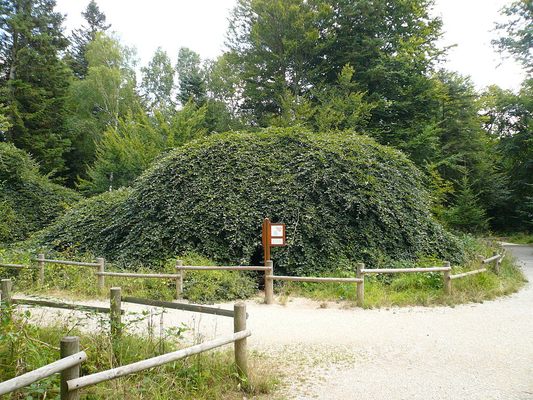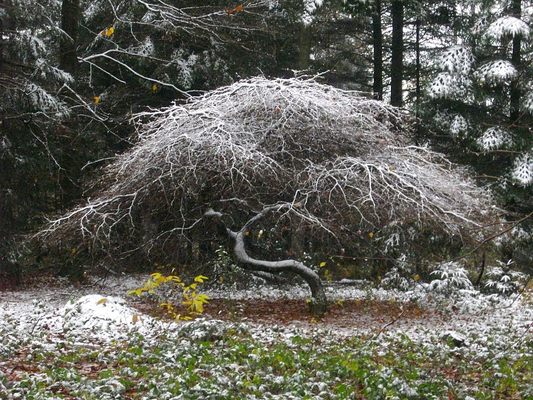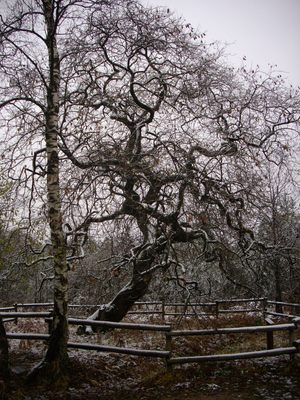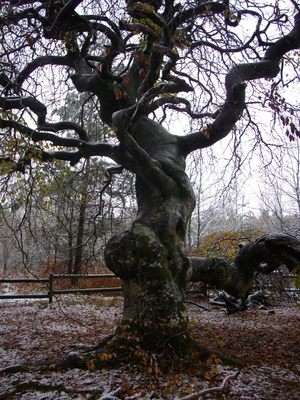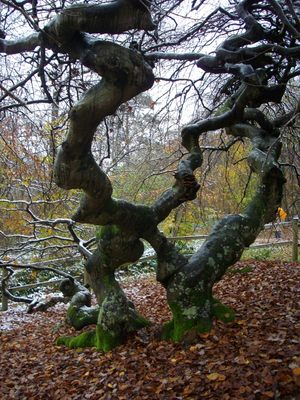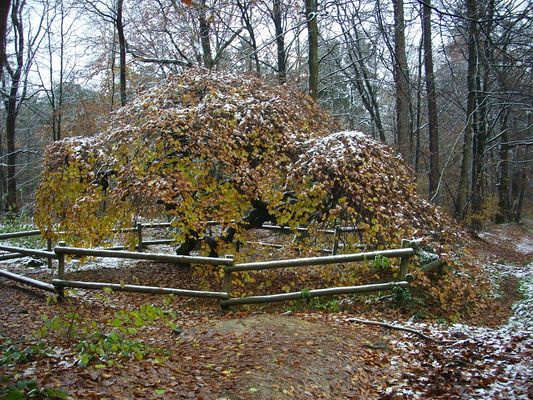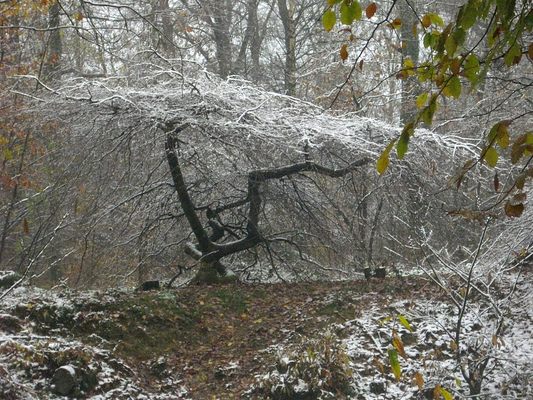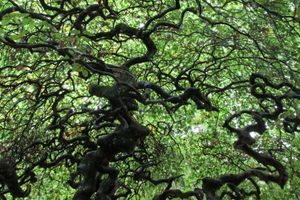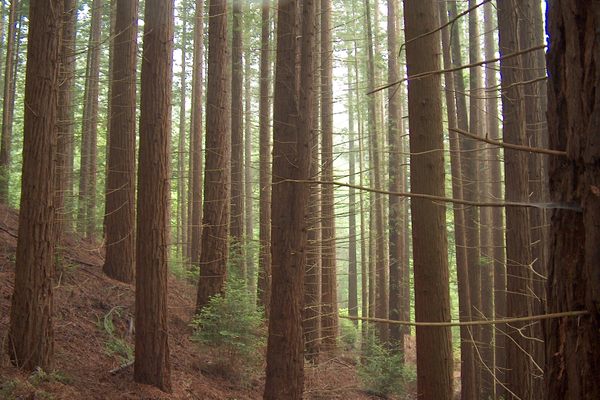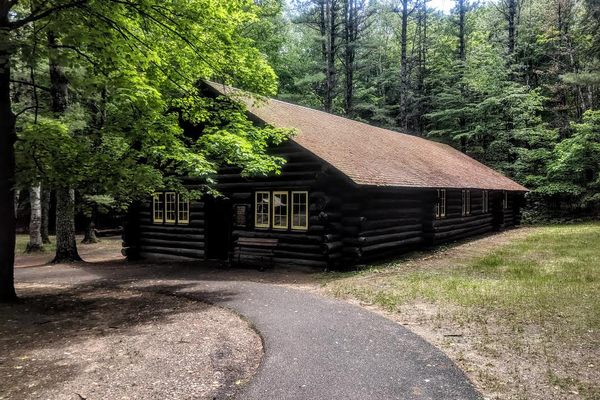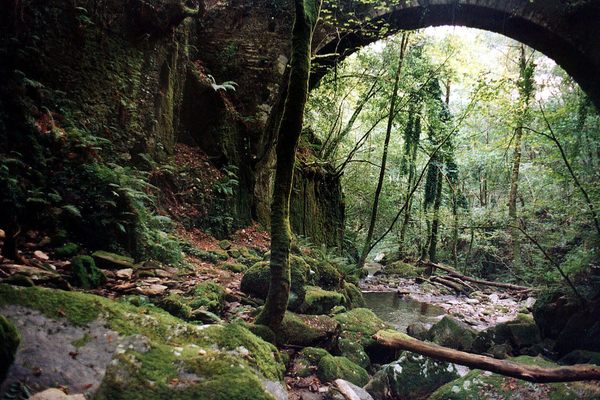About
Dwarf beech trees top out at 4 or 5 meters (or roughly 15 feet) and are notable for the wide spread of their boughs and the dramatic forms they assume. They can be found in Germany, Sweden, and Denmark, as well as multiple locations in France. However, the Faux de Verzy national forest contains nearly 1000 of the hauntingly beautiful trees, making it the largest concentration of dwarf beeches in the world.
The forest's name comes from the word fau (plural: faux), which was the beech tree's name in Old French, derived from the Latin fagus (the modern French word for beech, hêtre, comes from German). The earliest mention of the existence of dwarf beeches in the area is found in a book from the nearby St-Basle Abbey and dates all the way back to the 6th century. It is unclear what led to their proliferation but speculation abounds, including suggestions that they abbey monks had a hand in spreading the relatively rare trees locally as well as abroad.
The peculiar characteristics of the dwarf beeches—which include not only their striking appearance but also their longevity (with specimens found up to 350 years old) and their abilities to fuse branches and propagate from aerial limbs—have been conclusively proven to be the result of genetic mutation, but the origin of this genetic mutation remains unknown. One popular guess chalked it up to a local pathogen; this seemed possible given the existence (in much smaller numbers) of dwarf oaks and chestnuts in the area as well, but analysis undertaken to test this theory failed to yield any evidence.
The Faux de Verzy features a marked footpath through a fenced reserve so that visitors can view these curious trees without doing damage to their delicate root structures. Some of the more spectacular specimens have been given nicknames, such as the Umbrella Fau, the Ox-Head Fau, and the Fau of the Bride. The Maiden's Fau is so-named because legend has it that Joan of Arc once napped at the foot of the tree. Strangely, dwarf beeches are surprisingly intertwined with the story of Joan of Arc, as the town of her birth boasted a famous dwarf beech that was mentioned eleven separate times at her trial.
Related Tags
Know Before You Go
There's no optimal season to visit the Faux, beautiful 365 out of 365 days a year. Really easy walk. Access to most areas possible with wheelchairs and strollers. Dogs are welcome. Car park well indicated.
Published
September 6, 2016
